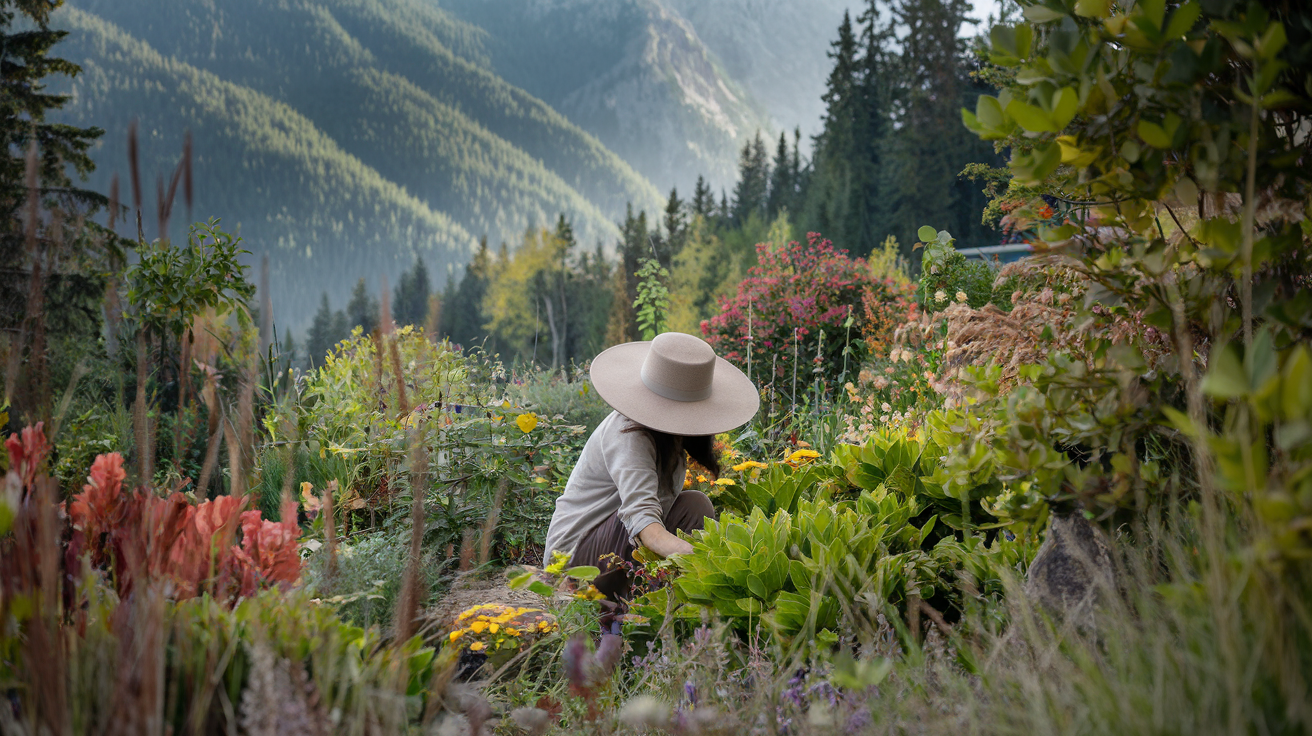If you’re looking to create a long-lasting herb garden that can withstand the varying temperatures of zone 5, you’ve come to the right place. Let’s explore how you can cultivate a flourishing herb patch that will provide you with fresh flavors and fragrances season after season.
Understanding Zone 5 and Perennial Herbs
What is Zone 5?
Before we dive into the specifics of perennial herbs, it’s crucial to understand what zone 5 means in the gardening world. The USDA Plant Hardiness Zone Map divides North America into 13 zones based on average annual minimum winter temperatures. Zone 5 typically experiences minimum temperatures between -20°F to -10°F (-28.9°C to -23.3°C).
What are Perennial Herbs?
Perennial herbs are plants that live for more than two years, returning each spring from their rootstock. These hardy plants are an excellent investment for any gardener, as they provide years of harvest with relatively low maintenance.
Top Perennial Herbs for Zone 5

Thyme (Thymus vulgaris)
Thyme is a versatile herb that thrives in zone 5. Its aromatic leaves are perfect for culinary use and its tiny flowers attract beneficial pollinators.
Growing Tips:
- Plant in well-draining soil
- Prefers full sun
- Drought-tolerant once established
Oregano (Origanum vulgare)
Oregano is a hardy perennial that adds a Mediterranean flair to your garden and cuisine.
Growing Tips:
- Plant in sandy, well-draining soil
- Requires full sun
- Prune regularly to prevent woody growth
Chives (Allium schoenoprasum)
Chives are one of the easiest perennial herbs to grow in zone 5. Their delicate onion flavor makes them a popular addition to many dishes.
Growing Tips:
- Plant in rich, moist soil
- Can tolerate partial shade
- Divide every few years to prevent overcrowding
Mint (Mentha spp.)
Mint is a vigorous grower that can thrive in zone 5. However, it’s best to plant it in containers to prevent it from spreading too aggressively.
Growing Tips:
- Plant in rich, moist soil
- Can tolerate partial shade
- Contains invasive tendencies, so consider container planting
Sage (Salvia officinalis)
Sage is a beautiful and fragrant herb that adds both culinary and ornamental value to your garden.
Growing Tips:
- Plant in well-draining soil
- Prefers full sun
- Prune in spring to encourage bushier growth
Preparing Your Zone 5 Garden for Perennial Herbs
Creating the ideal environment for your perennial herbs is crucial for their long-term success. Here are some key steps to prepare your garden:
Soil Preparation
Most perennial herbs prefer well-draining soil. Before planting, amend your soil with organic matter like compost to improve drainage and nutrient content. A soil pH between 6.0 and 7.0 is ideal for most herbs.
Sunlight Requirements
The majority of perennial herbs thrive in full sun, which means at least 6 hours of direct sunlight daily. However, some herbs like mint and chives can tolerate partial shade. Consider the sunlight patterns in your garden when choosing planting locations.
Spacing and Layout
Proper spacing is crucial for the health of your perennial herbs. Here’s a general guide:
- Small herbs (thyme, oregano): 12-18 inches apart
- Medium herbs (sage, chives): 18-24 inches apart
- Large herbs (rosemary, lavender): 24-36 inches apart
Remember to account for the mature size of the plants when planning your layout.
Planting Techniques for Perennial Herbs in Zone 5
When to Plant
The best time to plant perennial herbs in zone 5 is in the spring after the last frost date or in early fall, at least 6 weeks before the first frost. This gives the plants time to establish their root systems before extreme temperatures set in.
How to Plant
- Dig a hole twice the size of the root ball.
- Add some compost to the hole and mix with native soil.
- Place the plant in the hole, ensuring the top of the root ball is level with the soil surface.
- Backfill with soil and press gently to remove air pockets.
- Water thoroughly after planting.
Caring for Your Perennial Herbs
Watering
While many perennial herbs are drought-tolerant once established, they need regular watering during their first growing season. Water deeply but less frequently to encourage deep root growth.
Fertilizing
Most herbs don’t require heavy fertilization. In fact, too much fertilizer can lead to less flavorful herbs. A light application of balanced, organic fertilizer in the spring is usually sufficient.
Pruning and Maintenance
Regular pruning helps maintain the shape of your herbs and promotes bushier growth. Here are some pruning tips:
- Pinch back the growing tips regularly to encourage branching.
- Remove any dead or yellowing leaves.
- Cut back woody herbs like lavender and sage by about one-third in early spring.
Winter Protection
While perennial herbs for zone 5 are chosen for their cold hardiness, some extra protection can help ensure their survival:
- Apply a 2-3 inch layer of mulch around the base of the plants after the ground freezes.
- Consider covering plants with burlap or using cold frames for extra sensitive varieties.
- Avoid fertilizing late in the season, as this can stimulate new growth that’s vulnerable to frost damage.
Common Pests and Diseases in Perennial Herb Gardens
Even hardy perennial herbs can face challenges from pests and diseases. Here are some common issues and how to address them:
Pests
- Aphids: These small, sap-sucking insects can be controlled with a strong spray of water or insecticidal soap.
- Spider Mites: These tiny pests thrive in dry conditions. Regular misting and maintaining proper humidity can help prevent infestations.
- Whiteflies: These can be managed with sticky traps or by introducing natural predators like ladybugs.
Diseases
- Root Rot: Caused by overwatering or poor drainage. Ensure proper soil drainage and avoid overwatering.
- Powdery Mildew: This fungal disease appears as a white powder on leaves. Improve air circulation and avoid overhead watering.
- Leaf Spot: Various fungi can cause spots on leaves. Remove affected leaves and avoid wetting foliage when watering.
Harvesting and Using Your Perennial Herbs
One of the joys of growing perennial herbs is the bountiful harvest they provide. Here are some tips for harvesting and using your herbs:
Harvesting Techniques
- Harvest in the morning after the dew has dried but before the heat of the day.
- Use clean, sharp scissors or pruning shears to avoid damaging the plants.
- Never harvest more than one-third of the plant at a time to ensure continued growth.
Preserving Your Harvest
- Drying: Hang small bunches of herbs in a warm, dry place out of direct sunlight.
- Freezing: Chop herbs and freeze in ice cube trays with a bit of water or oil.
- Herb-infused oils: Steep fresh herbs in olive oil for flavored cooking oils.
Culinary Uses
- Add fresh herbs to salads, soups, and sauces for a burst of flavor.
- Use dried herbs in rubs for meats or in homemade tea blends.
- Create herb-infused vinegars or oils for unique salad dressings.
The Benefits of Growing Perennial Herbs in Zone 5
Growing perennial herbs in your zone 5 garden offers numerous benefits:
- Sustainability: Perennial herbs reduce the need for annual replanting, conserving resources and time.
- Cost-effective: Once established, these herbs provide years of harvest, saving money on store-bought herbs.
- Beneficial for pollinators: Many herbs produce flowers that attract bees, butterflies, and other beneficial insects.
- Low maintenance: After the initial establishment period, most perennial herbs require minimal care.
- Year-round interest: Even in winter, the structural elements of these plants can add interest to your garden.
Companion Planting with Perennial Herbs
Companion planting is the practice of growing different plants together for mutual benefit. Perennial herbs can be excellent companions for other plants in your garden:
Beneficial Combinations
- Rosemary and carrots: Rosemary can help repel carrot flies.
- Sage and brassicas: Sage may deter cabbage moths.
- Thyme and strawberries: Thyme can help improve the flavor of strawberries.
Plants to Avoid
Some herbs don’t play well with others. For example:
- Fennel can inhibit the growth of many plants and should be grown separately.
- Mint’s aggressive growth can overwhelm neighboring plants, so it’s best grown in containers.
Designing Your Perennial Herb Garden
Creating a beautiful and functional herb garden can be a rewarding experience. Here are some design ideas:
Formal Herb Garden
Create a symmetrical design with geometric beds separated by pathways. This classic style works well with many perennial herbs.
Cottage Garden Style
Intermix herbs with flowers for a relaxed, informal look. This style allows for creativity and can attract beneficial insects.
Herb Spiral
Build a spiral-shaped raised bed that creates microclimates suitable for different herbs. This design maximizes space and adds visual interest.
Container Herb Garden
Perfect for small spaces or for controlling aggressive herbs like mint. Use a variety of containers for visual appeal.
Frequently Asked Questions about Perennial Herbs in Zone 5
Q1: Can I grow lavender in zone 5?
A: Yes, you can grow lavender in zone 5, but it requires some extra care. Choose cold-hardy varieties like ‘Munstead’ or ‘Hidcote’, provide excellent drainage, and consider winter protection.
Q2: How do I prevent my mint from taking over the garden?
A: The best way to control mint is to plant it in containers, either above ground or sunk into the soil. This contains the roots and prevents spreading.
Q3: Which perennial herbs are best for cooking?
A: Some of the best culinary perennial herbs for zone 5 include thyme, oregano, sage, chives, and tarragon. These herbs are hardy and offer a range of flavors for cooking.
Q4: How often should I divide my perennial herbs?
A: Most perennial herbs benefit from division every 3-4 years. This rejuvenates the plants and prevents overcrowding. Spring is usually the best time for division.
Q5: Can I grow rosemary as a perennial in zone 5?
A: Rosemary can be challenging to grow as a perennial in zone 5 due to the cold winters. However, with proper winter protection (like moving to a sheltered location or using cold frames) and choosing hardy varieties, it’s possible.
Conclusion
Growing perennial herbs in zone 5 is a rewarding endeavor that can provide years of fresh flavors, fragrances, and beauty to your garden. By choosing the right varieties, preparing your garden properly, and providing appropriate care, you can create a thriving herb garden that withstands the test of time and weather.
Remember, gardening is a journey of continuous learning and adaptation. Don’t be discouraged if some plants don’t thrive initially – use it as an opportunity to learn and adjust your approach. With patience and care, your perennial herb garden will become a source of pride and enjoyment for years to come.
At Rhys Garden, we’re passionate about helping gardeners of all levels succeed. We hope this guide has inspired you to start or expand your perennial herb garden in zone 5. Happy gardening!

Related Posts
How to Germinate Orchid Seeds: A Beginner’s Guide to Growing
How to Germinate Lettuce Seeds: A Comprehensive Guide
The Ultimate Guide to Worms in Plant Soil: Friend or Foe?